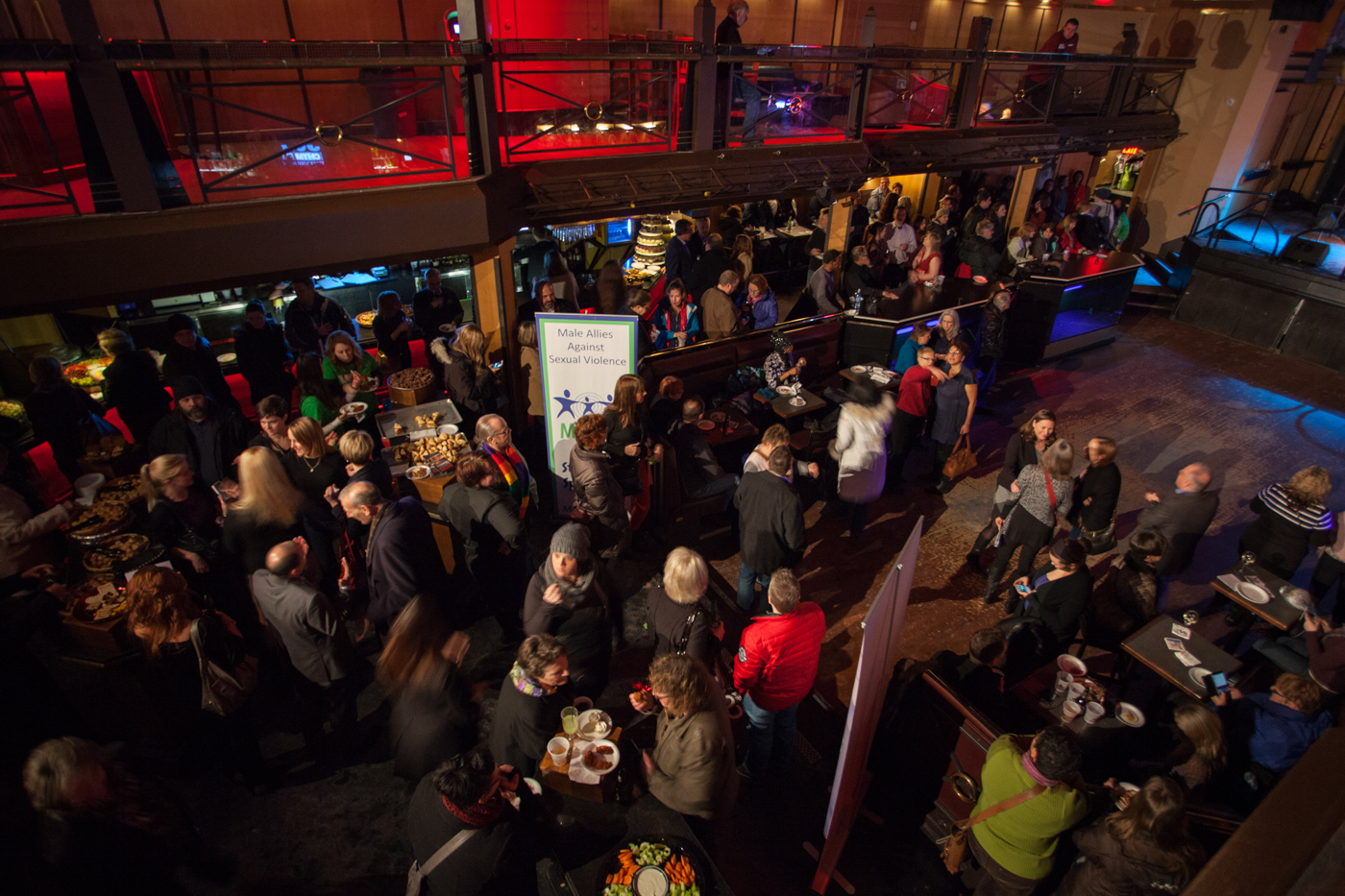Erin McLean-Purdon
CONTRIBUTOR
Joe Martz
PHOTO
Content note: this article discusses gendered violence.
In 2015, the Canadian Centre for Policy Alternatives released a report entitled “The Best and Worst Places to Be a Woman In Canada.” Looking at Canada’s 25 biggest cities, the report considered the gender gap in five areas: economic security, leadership, health, education and personal security. Collectively, the cities of Waterloo Region ranked 25th, making them the worst cities for women to live, in Canada. The cities also ranked second-last in the area of personal security, which considers the prevalence of reported domestic and sexual violence against women.
So Waterloo Region can generally do more to foster a safe and supportive community for women. But, and beside the obvious, what role do men have to play in ending sexual violence against women?
Sara Casselman, the Executive Director of the Sexual Assault Support Centre of Waterloo Region, described how sexual violence is a systemic issue that disproportionately affects women.
“About 85 per cent or so that are [sexually] assaulted are women or girls. The other 15 per cent are predominantly boys. Certainly adult males are sexually assaulted, that’s true and they deserve support and understanding when that happens… Unfortunately, 98 to 99 per cent that offend sexually are male.”
Because men are overwhelmingly the perpetrators of sexual violence, in 2006 an idea began to float around SASC. Instead of focusing on what women can do to avoid sexual assault, they decided to look at the root causes. In order to create meaningful change, men needed to be involved.
In 2008, the newly-created Male Allies Against Sexual Violence program started engaging men and boys in ending gender-based violence through workshops, training and facilitated discussions about masculinity, respect, equality and feminism. According to Casselman, “we were the first sexual assault center in Ontario that had something like a male allies program.”
In 2013, SASC made another unprecedented decision when they hired a man to work with MAASV. To appreciate the boldness of this move it helps to understand the genesis and philosophy of sexual assault centers like SASC.
“We live in a society where women’s voices are seldom amplified. Women are usually not the ones in leadership positions,” Casselman explained.
In the Tri-Cities, women make up fewer than one-third of city councilors. One-third of senior managers are women.
“Sexual assault centers exist because (of) women’s advocacy and women working together, amplifying one another’s voices. It’s a very delicate balance in terms of how we engage men in the work,” Casselman shared.
Navigating this balance now, as MAASV’s coordinator, is Stephen Soucie. With MAASV, Soucie talks to men and boys about their role in ending sexual violence against women, toxic ideas of masculinity, and the intersection between these two things.
“The same dominant idea of manhood that leads some men to use violence towards women also leads to violence against men,” Soucie said.
“In my high school, the men with the most masculine capital were the men who were the most aggressive, the most physically dominant. For the next four years, I struggled to put on the hard masculine performance. That led to a lot of anxiety and vulnerabilities. I kept thinking ‘What’s wrong with me?’ ‘How are all my friends naturally able to do this?’”
“Men aren’t taught to have these conversations,” Soucie continued. “I treated other people very poorly, specifically women. When I started to understand where that behaviour was coming from, I started to feel better about myself and treat those around me better.”
Casselman and Soucie nudged me into an uncomfortable state of self-reflection: not perpetrating sexual violence against women is the obvious place to start, but it is not enough.
There’s more to do. I’m always unlearning and working to be a better ally, partner and man, though the faults of others are typically easier to see than our own. However, this attitude does little to motivate us to look critically at how our actions, as men, cultivate a culture where sexual violence against women occurs, often with impunity.
Nonetheless, Casselman shared that “MAASV gives me hope… that social change is possible, that sexual violence against women is universal but it is not inevitable; it’s preventable.”
Having men participate in MAASV, Casselman continued, is also an important step in the healing process for some survivors of sexual violence. Wendy, a survivor of sexual violence, shared her experience of talking to a group of MAASV volunteers-in-training. “At first I felt every emotion imaginable. I was skeptical that men would take me seriously. As it turned out, I was shown the utmost respect by all. I was surprised at the amount of understanding they showed me. That was never the case before. I had my faith in people restored that night. From the first time I revealed to anyone what was happening to me until that night, I felt I was alone,” she shared.
Wendy concluded that “after speaking, I felt relieved and a little happier because I saw a big change in how survivors of sexual abuse were seen by society. I am very hopeful that the group of men I spoke to will go on and be able to help survivors in years to come.”
Much work has to be done. This work requires men to support and not lead, to listen without talking, and to be respectful in all their interactions with all the women in their lives.

